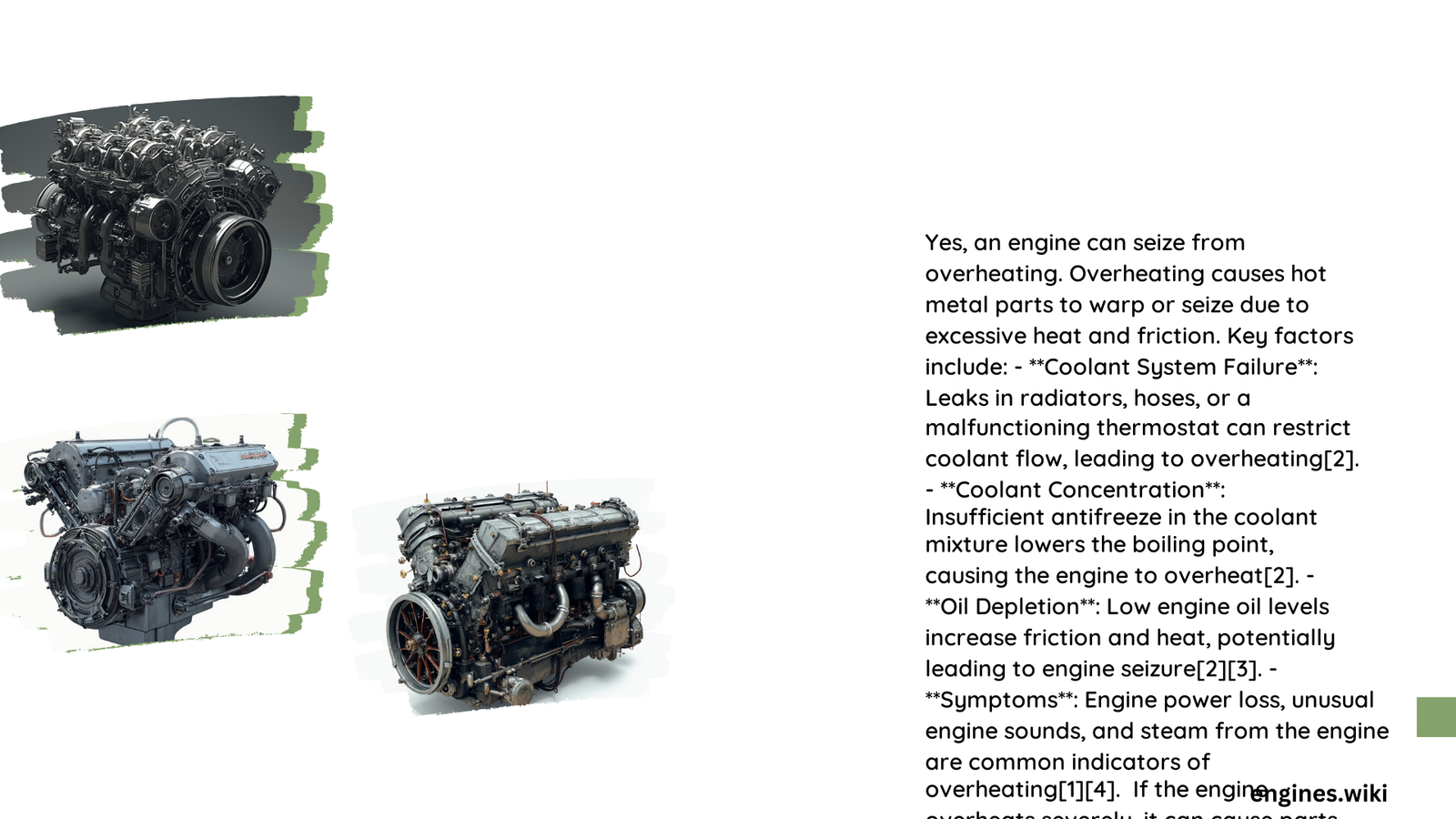Engine overheating represents a catastrophic mechanical failure that can rapidly transform a functional vehicle into an expensive paperweight. When temperatures escalate beyond critical thresholds, metal components experience dramatic structural changes, potentially causing instantaneous seizure through thermal expansion, lubrication breakdown, and material stress mechanisms that compromise engine integrity.
What Causes Engine Seizure During Overheating?
How Do Temperature Thresholds Trigger Engine Damage?
Engine components operate within precise temperature ranges. When temperatures exceed these limits, several critical processes occur:
- Thermal Expansion: Metal components expand disproportionately
- Lubrication Breakdown: Oil loses viscosity and protective capabilities
- Material Deformation: Pistons, cylinder walls, and bearings experience structural changes
Critical Temperature Ranges
| Component | Normal Range | Critical Range | Potential Damage |
|---|---|---|---|
| Coolant | 90-105°C | 110-130°C | Boiling, System Pressure |
| Engine Oil | 100-120°C | 130-150°C | Viscosity Loss |
| Aluminum Components | 150-200°C | 220-250°C | Structural Weakness |
What Mechanical Processes Lead to Engine Seizure?
When an engine overheats, multiple interconnected mechanical failures can occur:
- Lubrication Film Destruction
- High temperatures break down oil molecular structure
- Reduces friction protection between moving parts
-
Creates microscopic welding between metal surfaces
-
Material Property Transformation
- Aluminum components become brittle
- Increased molecular friction
- Potential warping of critical engine structures
How Quickly Can Overheating Cause Permanent Damage?
The timeline for potential engine seizure is surprisingly short:
- 0-5 Minutes: Initial temperature warning
- 5-15 Minutes: Critical component stress begins
- 15-30 Minutes: High probability of irreversible damage
- 30+ Minutes: Complete engine seizure likely
What Are the Most Common Overheating Triggers?
Critical factors contributing to engine overheating include:
- Coolant system failures
- Water pump malfunction
- Thermostat blockage
- Radiator leaks
- Insufficient coolant levels
- Broken cooling fans
- Belt system failures
Can Immediate Actions Prevent Engine Seizure?
Recommended emergency procedures:
- Immediately stop the vehicle
- Turn off the engine
- Allow engine to cool naturally
- Check coolant levels
- Inspect for visible leaks
- Do not attempt to remove radiator cap when hot
- Seek professional diagnostic service
Prevention Strategies

Maintenance Recommendations
- Regular coolant system inspections
- Annual cooling system pressure tests
- Use manufacturer-recommended coolant
- Monitor temperature gauges
- Replace coolant at recommended intervals
Technical Insights
Engines represent complex thermal management systems where multiple variables interact simultaneously. Understanding these intricate relationships helps prevent catastrophic failures.
Economic Impact
Average repair costs for seized engines:
– Minor damage: $1,500 – $3,000
– Complete engine replacement: $4,000 – $8,000
– Luxury/performance vehicles: $10,000+
Conclusion
Engine seizure from overheating is not just possible—it’s a predictable outcome when thermal management fails. Proactive maintenance and immediate response to temperature warnings can save thousands in potential repair costs.
References:
– https://www.mavyn.com/blog/engine-seizure-guide
– https://www.ford-trucks.com/forums/engine-overheating
– https://en.motofocus.eu/thermal-engine-damage
